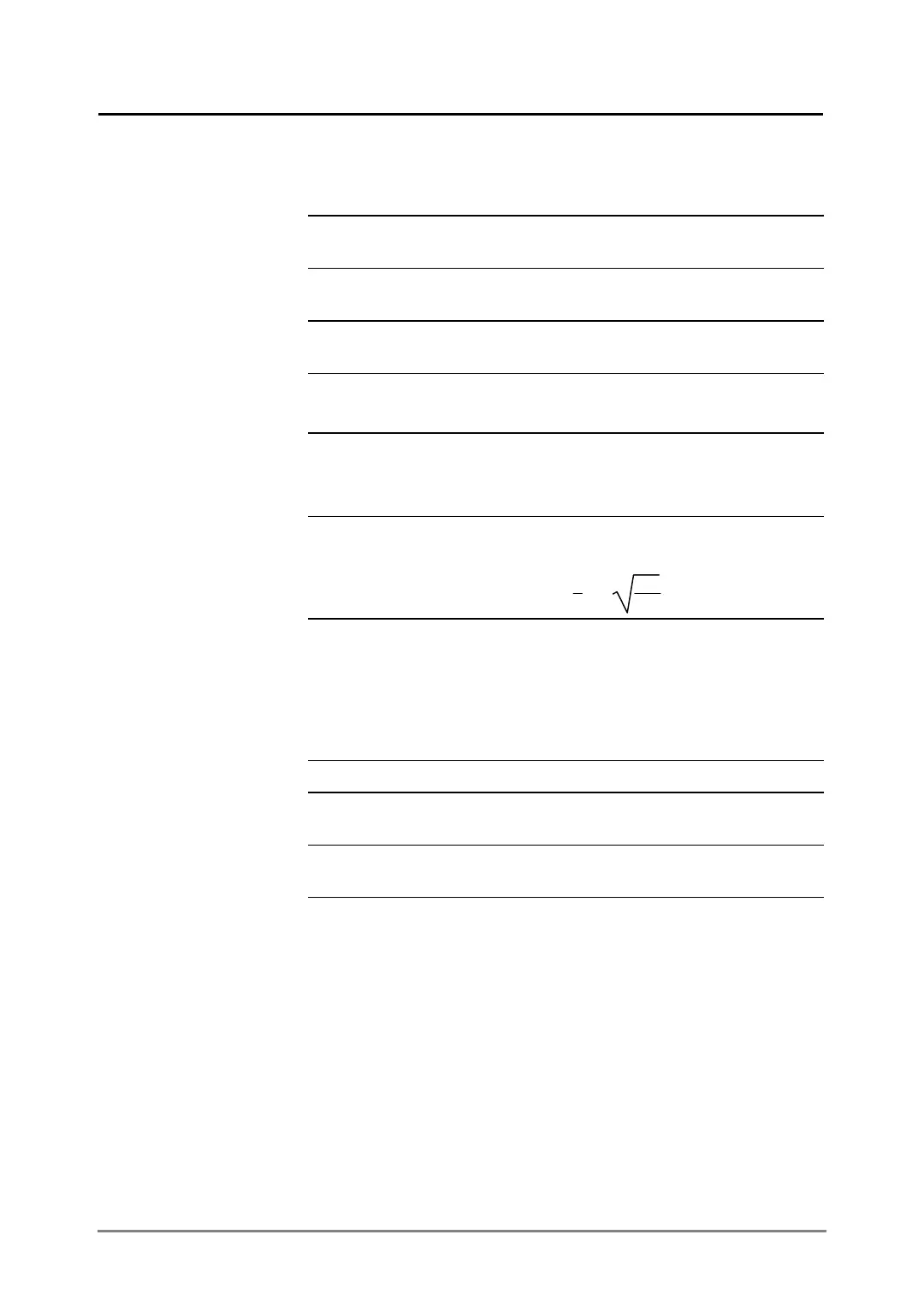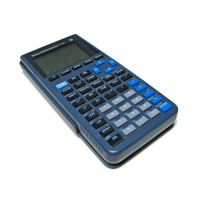Appendix B: Technical Reference 898
Determines how 2-element and 3-element vectors are displayed. You can
enter vectors in any of the coordinate systems.
1:RECTANGULAR Coordinates are in terms of x, y, and z. For example,
[3,5,2] represents x = 3, y = 5, and z = 2.
2:CYLINDRICAL Coordinates are in terms of r, q, and z. For example,
[3,
∠45,2] represents r = 3, q = 45, and z = 2.
3:SPHERICAL Coordinates are in terms of r, q, and f. For example,
[3,
∠45, ∠90] represents r = 3, q = 45, and f = 90.
Determines how results are displayed on the Home screen.
1:OFF Results are displayed in a linear, one-dimensional
form.
For example, p^2, p/2, or ‡((x-3)/x)
2:ON Results are displayed in conventional mathematical
format.
For example, p
2
,
p
2
, or
xì3
x
Note: For a complete description of these settings, refer to “Formats of
Displayed Results” in the
Operating the Calculator
module.
Lets you split the screen into two parts. For example, you can display a
graph and see the Y= Editor at the same time.
1:FULL The screen is not split.
2:TOP-BOTTOM The applications are shown in two screens that are
above and below each other.
3:LEFT-RIGHT The applications are shown in two screens that are to
the left and right of each other.
To determine what and how information is displayed on a split screen, use
this mode in conjunction with other modes such as Split 1 App, Split 2 App,
Number of Graphs, and Split Screen Ratio. (Split Screen Ratio is available
on the Voyage™ 200 only.)
Vector Format
Pretty Print
Split Screen

